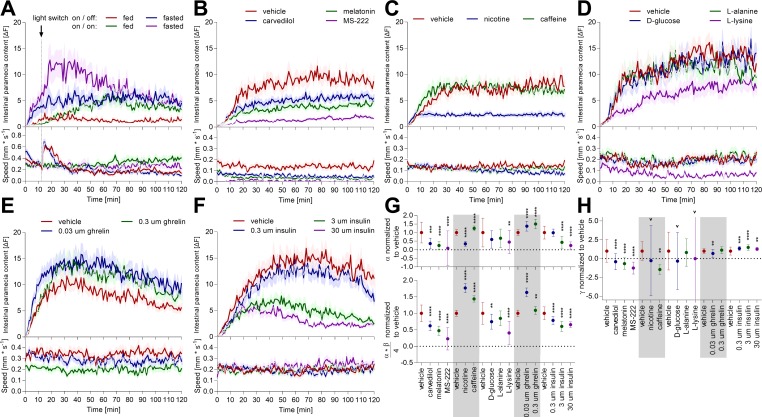Fig. 10.
Distinct environmental, pharmacological, and physiological interventions modulate feeding and swimming behavior. A: individual zebrafish larvae (7 dpf) were fasted for 2 h or constantly fed prior to exposure to an excess of labeled paramecia. White light illumination was shut off 12 min after paramecia exposure (pointed line). Zebrafish ingestion and digestion of labeled paramecia were quantified simultaneously with their swimming behavior. Values are expressed as means ± SE; n = 24. B–F: individual zebrafish larvae (7 dpf) were fasted for 2 h, and then exposed for 30 min to a specific compound prior to being given access to an excess of labeled paramecia. Zebrafish ingestion, digestion, and swimming behavior were monitored with the infrared macroscope. Distinct compounds were used: sedating pharmaceuticals (B), common daily drugs (C), individual nutrients (D), and physiological peptides (E and F). All of the experimental data acquired were fit to the model established in Fig. 5, and the parameters describing the ingestion (G) and the digestion (H) function were extracted. Values are expressed as means ± SE; n = 32 (B–D), 36 (E and F); unpaired one-way ANOVA, Dunnett post hoc test; **P < 0.01, ***P < 0.001, ****P < 0.0001.

